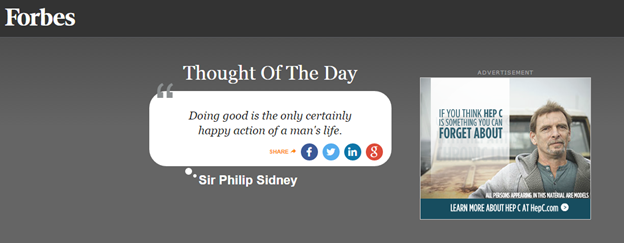
Talk about determination. Hackers strung together zero-day vulnerabilities in Flash and Internet Explorer and then compromised Forbes.com so that the attacks would compromise financial services and defense contractor employees visiting the site, researchers said.
The November breach of Forbes compromised the Thought of the Day page that is displayed briefly upon visiting the site. The page downloaded attack code exploiting a vulnerability in what then was a fully updated version of Adobe Flash. To bypass Address Space Layout Randomization—a mechanism built into Flash and many other applications to make drive-by attacks harder—the Forbes page downloaded a second attack. The latter attack exploited a then-zero-day vulnerability in IE that allowed the Flash exploit to successfully pierce the exploit mitigation defense. From start to finish, the attack took about seven seconds.
"In the world of cyber threats, the chained 0-day exploit is a unicorn—the best known attack with chained 0-days was the Stuxnet attack allegedly perpetrated by US and Israeli intelligence agencies against Iran's nuclear enrichment plant at Natanz as part of an operation known as Olympic Games," a blog post detailing the attack explained. "Given the highly trafficked Forbes.com website, the exploit could have been used to infect massive numbers of visitors." Instead, only visitors from US Defense and financial services firms were hacked.
Adobe patched the Flash vulnerability, designated as CVE-2014-9163, in early November. Microsoft fixed CVE-2015-0071 on Tuesday. The Forbes.com compromise is believed to have started in late November and lasted for a few days.The incident, which was uncovered by researchers from security firms Invincea and iSIGHT Partners, underscores the ingenuity and determination of today's hackers. Any one of the key ingredients of the hack—the Flash bug, the IE flaw, or the compromise of Forbes.com—wasn't enough to penetrate the defenses of defense contractors or financial services firms. But by stringing them together, the attackers were able to achieve their goals. It also helps explain why even minor software flaws that don't by themselves allow for remote code execution—for instance an escalation of privilege bug or a disclosure flaw—nonetheless pose a significant threat to end users.

reader comments
87